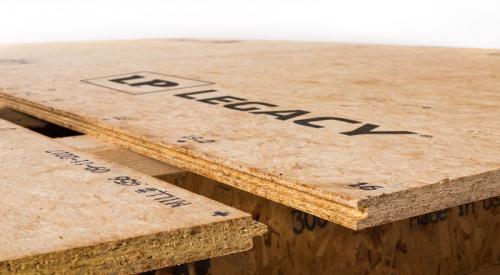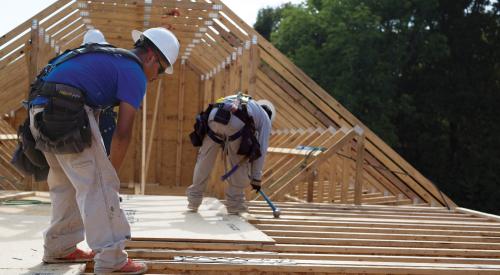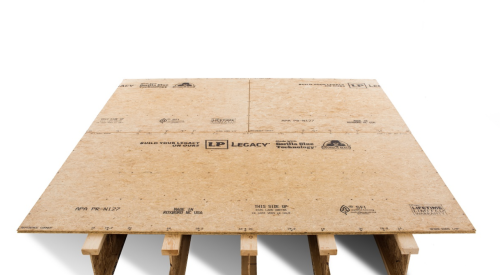In years past, many builders may have considered OSB solely as a commodity, and perhaps even an afterthought. But that’s simply no longer the case. Manufacturers have been dedicating time and technology to creating sub-flooring panels across a range of performance levels. This means builders can match their sub-flooring panel with their clients’ budget, the expected performance levels of their home, the location, and the other materials in the flooring system.
For example, here’s how good-better-best OSB sub-flooring stacks up at LP:
Commodity sub-flooring: LP’s TopNotch® 250 sub-flooring offers excellent strength and stiffness for a commodity product, along with added features such as a self-spacing tongue-and-groove design that speeds up installation, notches to drain away bulk water, and a 25-year warranty.
Advanced sub-flooring: TopNotch 350 builds on the commodity product offering not just excellent strength and stiffness but addedmoisture resistance anduniform thickness with the same tongue-and-groove design and notching system. The surface of these panels also is sanded.
Premium sub-flooring: LP Legacy® premium sub-flooring is one of the strongest and stiffest on the market and offers maximum moisture resistance resulting in a no-sand warranty. The product’s densityhelps with fastener holding, ideal under tile and hardwood.

Consider a premium sub-flooring product like LP Legacy® for areas under hardwood flooring or tile, which are more sensitive to movement underneath.
Matching Project and Performance
The beauty of so much choice means contractors can select exactly the right sub-flooring panel for each application—across different products or within them—depending on a customer’s location, budget, and performance expectations.
If a home doesn’t have a budget for a full application of premium sub-flooring, consider a premium product for areas under hardwood flooring or tile, which are more sensitive to movement underneath, then use commodity or advanced products in areas with carpet.
Similarly, a more premium sub-floor may provide for a strong, less bouncy feel underfoot, making it and other more robust engineered flooring system products a go-to choice for kitchens with large islands or in the dining room with a large china cabinet. If budget is a concern, balance out the extra expense with a more commodity level product elsewhere in the home.
For custom homes where budgets are less limiting and buyer tastes more discerning, an investment in a whole house of premium sub-flooring can help reduce callbacks due to performance not meeting expectations. On the opposite end, where budgets are tighter, a commodity sub-floor may be selected, and will still perform well over time, but shouldn’t be exposed to the elements for long periods.
Another consideration is the home’s schedule and climate. In areas where rain is common and the sub-flooring will be exposed for long periods of time, an investment in a premium panel can help avoid moisture issues, thereby reducing the need to sand edges later.
For builders looking to maximize their floor system, take each home on a case-by-case basis and consider the attributes of each panel. This will ensure that performance is maximized within consideration of budget and expectations.













